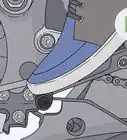This article was co-authored by wikiHow staff writer, Eric McClure. Eric McClure is an editing fellow at wikiHow where he has been editing, researching, and creating content since 2019. A former educator and poet, his work has appeared in Carcinogenic Poetry, Shot Glass Journal, Prairie Margins, and The Rusty Nail. His digital chapbook, The Internet, was also published in TL;DR Magazine. He was the winner of the Paul Carroll award for outstanding achievement in creative writing in 2014, and he was a featured reader at the Poetry Foundation’s Open Door Reading Series in 2015. Eric holds a BA in English from the University of Illinois at Chicago, and an MEd in secondary education from DePaul University.
There are 9 references cited in this article, which can be found at the bottom of the page.
This article has been viewed 55,700 times.
Learn more...
A motorcycle’s idle speed refers to the how fast your motorcycle rolls forward when you release the brake with the engine running. If you have a carburetor on your bike, the idle speed can be adjusted by the aptly named idle screw. If you have a fuel-injected bike, you may be able to adjust the idle speed with the small knob that sticks out of engine compartment on the left or right side of the bike. If you don’t have one of these knobs, a high or low idle speed on a fuel-injected motorcycle is typically a symptom of a larger mechanical problem or a dirty engine compartment.
Steps
Identifying and Accessing the Idle Screw
-
1Check your motorcycle’s manual to find the recommended idle RPM. The ideal idle speed for your bike is listed in your manual. Flip through your specific manual to find the ideal RPM settings, which is usually around 700-1,000 RPM. Search for a copy of your specific bike’s manual online if you don’t have the hard copy.[1]
- Some bikes have tachometers that let you monitor the RPM when the motorcycle is on. You can use the tachometer to check your idle speed before doing this to determine if it’s already within the ideal range.
- For standard motorcycles that don’t have tachometers, this is less important since you’ll need to determine the RPM settings by ear and feel. When in idle, the sound of the engine should be a low buzz—it shouldn’t sound like a high-pitched throttle.
-
2Locate the carburetor on your motorcycle by looking next to the engine. Check the diagram of the motorcycle in your manual to determine where the carburetor is. Use this diagram as a reference to look for your carburetor. The carburetor is a large metal component with a pipe on the top and a circular port on the side. It is typically located next to or underneath the engine.[2]
- The carburetor’s location varies from bike to bike. The carburetor’s job is to combine the air and gas to make it combustible. It also regulates the idle speed through a small screw, which is appropriately named the idle screw. The idle screw controls how much gas feeds into the engine when you aren’t throttling.
Advertisement -
3Find the idle screw by looking near the base of the float bowl for a spring. The float bowl is basically a miniature gas tank that sits on the bottom of the carburetor. Look around the float bowl for a screw connected to a 1–2 in (2.5–5.1 cm) coil. This is the idle screw. On some bikes, the coil is resting vertically against the carburetor, while on other bikes the coil sits horizontally and leads into the body of the carburetor.[3]
- This screw could be on the left or right side of the bike. If you can’t find it, try checking on the other side.
- On some fuel-injected motorcycles, there is a knob sticking out the side of your bike near the engine compartment. You can just turn this knob clockwise or counterclockwise to adjust the idle speed.[4]
Tip: The idle screw almost always has a Phillips head. If you see a nearby flathead screw, this is typically the air intake screw. While turning the air intake screw can be used to adjust the idle speed, this screw also controls the air flow when you’re actively riding. As a consequence, it’s generally not a good idea to mess with this screw.
-
4Remove any trim that is blocking access to the screw if necessary. If a piece of trim or a panel is blocking you from adjusting your idle screw, you’ll need to remove part of your bike’s body. To do this, use an Allen wrench or socket wrench to remove the bolts or screws holding the panel in place. Then, gently lift the panel off of the bike.[5]
- Some motorcycle panels and trim have clips that attach the piece to the frame of the bike. You can usually apply pressure to the sides of these clips to lift the panel out.
Adjusting the Idle Screw
-
1Turn your motorcycle on and wait 2-3 minutes for the engine to level out. Put your kickstand down and turn the motorcycle on. Wait at least 2 minutes for the engine to get hot and reach a stable temperature and speed. You can adjust the idle screw while the bike is off, but it’s better to do it when the bike is on so that the engine can adjust slowly to the change while there’s gas running through it.[6]
- If you’re doing this when it’s colder than 40 °F (4 °C) out, let the bike run for 10-15 minutes instead. Motorcycles have a cold idle setting that will restrict the idle speed until the engine gets hot.
-
2Check your idle RPM on the tachometer if you have one. If your bike has an RPM gauge, called a tachometer, take a look at the gauge while the bike is in idle. If the RPM is already in the acceptable idle range, you don’t need to change the idle settings with the screw. If the RPM isn’t in the acceptable range, determine whether you need to lower or raise the idle speed.[7]
Tip: If you don’t have a tachometer, you’ll have to do this based on the sound of the engine and the feel of the bike when you ride. Generally speaking, the idle should sound like a low rumble, and the bike should move fast enough for you to stabilize yourself without a foot on the ground when you release the bike.
-
3Tighten the screw clockwise to increase the idle speed. If your idle speed is too low, use a Phillips head screwdriver to turn the idle screw clockwise. If the coil is vertical and the screw is at the bottom, you need to turn the screw counterclockwise if you’re looking at it from above. Turn the screw 1-2 times to make minor adjustments, or 3-5 times to dramatically increase the idle RPM.[8]
- On some bikes, you can adjust the screw by hand. It’s generally safer to do this with a screwdriver, though.
- On newer sport bikes, there may be a knob on the side of the bike near the engine compartment. If there is, you can simply turn this knob clockwise to adjust the screw.
-
4Loosen the screw counterclockwise to turn the idle speed down. Turning the screw counterclockwise to decrease the idle speed and pull it back. Turn the screw 1-5 times based on how drastically you want to trim the idle speed on your bike.[9]
-
5Inspect the tachometer after adjusting the screw if you have a gauge. The tachometer’s needle will reflect the changes you make to your idle screw as soon as you make them. Check the tachometer after adjusting the idle screw to see if the RPM is within your manufacturer’s recommended range. If it isn’t, make additional adjustments until the needle is in an acceptable location when the bike is idling.[10]
-
6Get on your bike and release the brake to see how it feels. After you’ve adjusted the idle screw, sit on your bike and lift the kickstand up with your foot. Release the brake to let it idle for 5–10 feet (1.5–3.0 m). This will give you a sense for whether your idle speed is appropriate or not. If it feels too low or too high, make additional adjustments as needed to change the speed.
Things You’ll Need
- Phillips head screwdriver
- Allen wrench (optional)
- Socket wrench (optional)
References
- ↑ https://motorcyclehabit.com/why-is-my-motorcycle-idling-high/
- ↑ https://youtu.be/TDU2KOpYwFg?t=52
- ↑ https://www.millennium-tech.net/pdf/Jetting_Basics_for_2_Strokes.pdf
- ↑ https://youtu.be/IdQLx4OL5a0?t=93
- ↑ https://youtu.be/63PgbHu6Bc0?t=71
- ↑ https://youtu.be/63PgbHu6Bc0?t=4
- ↑ https://youtu.be/IdQLx4OL5a0?t=103
- ↑ https://youtu.be/63PgbHu6Bc0?t=94
- ↑ https://youtu.be/63PgbHu6Bc0?t=94
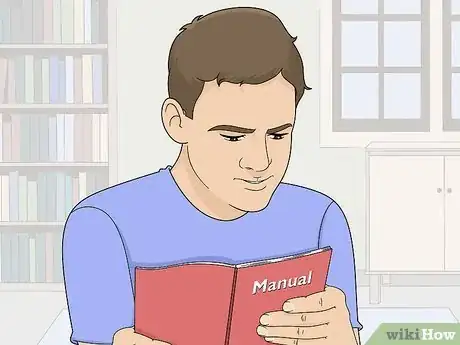
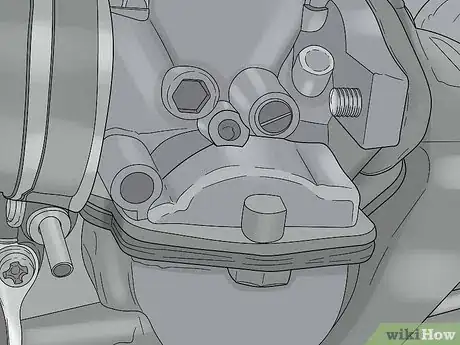
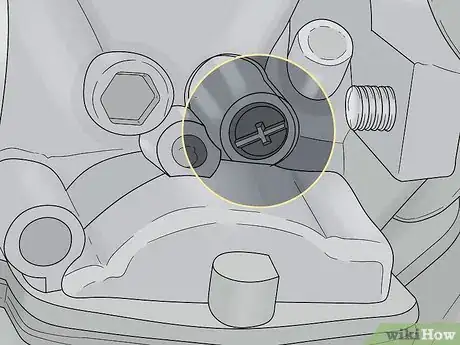
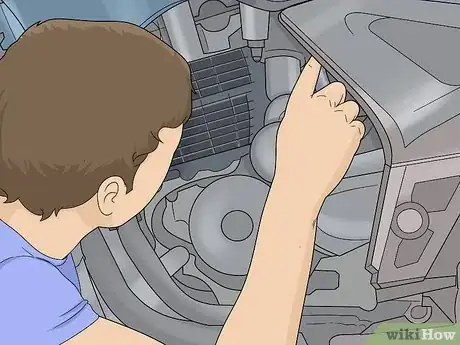
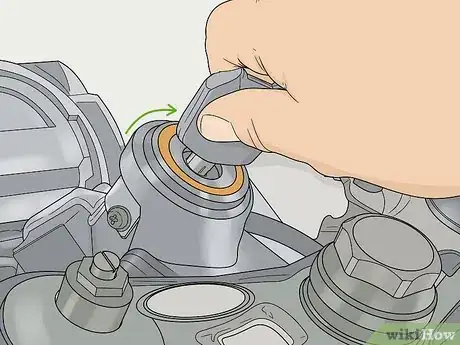
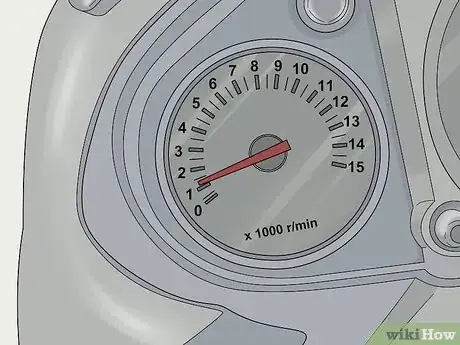
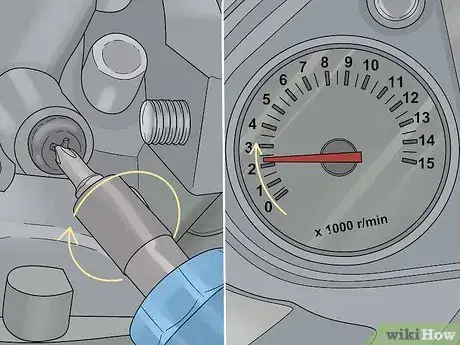
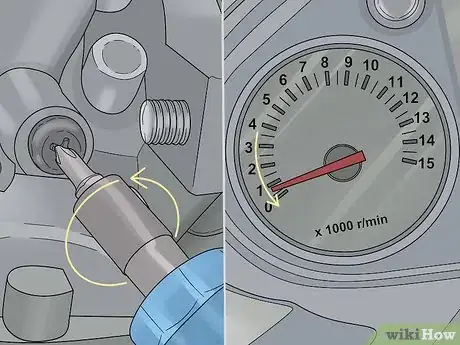

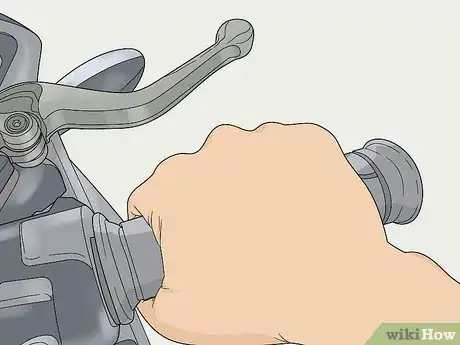
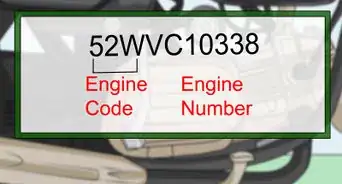
-Step-13.webp)
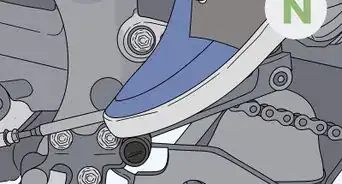
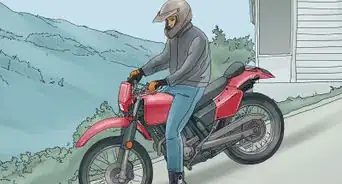

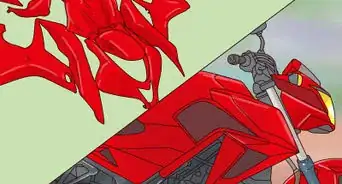
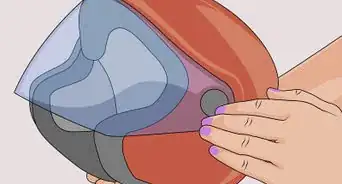
-Step-17.webp)

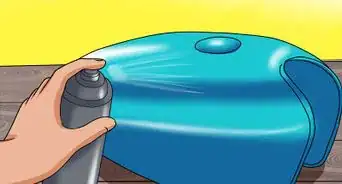
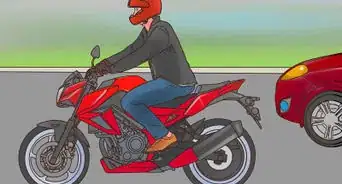







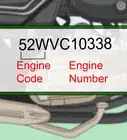
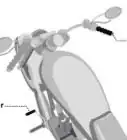
-Step-13.webp)
